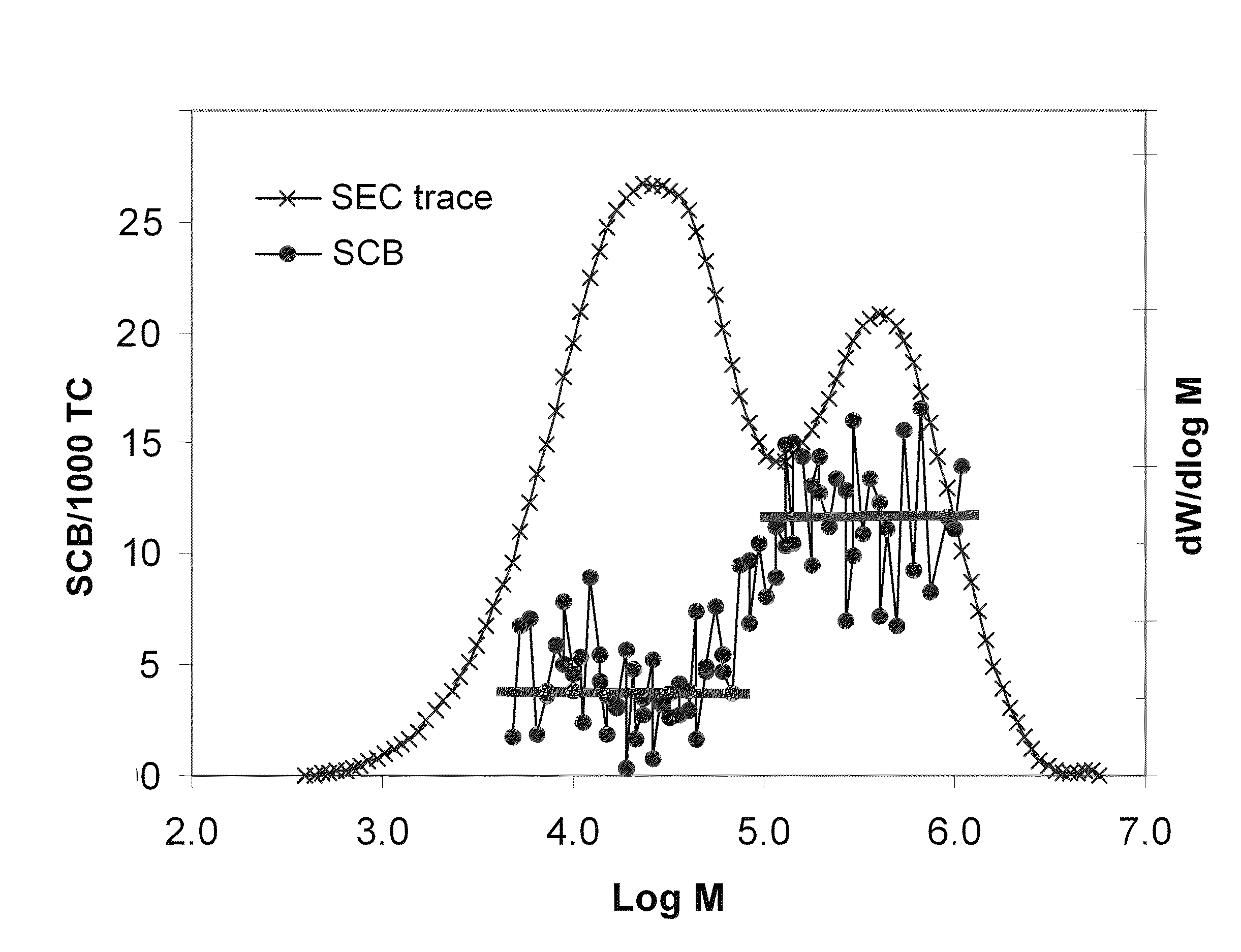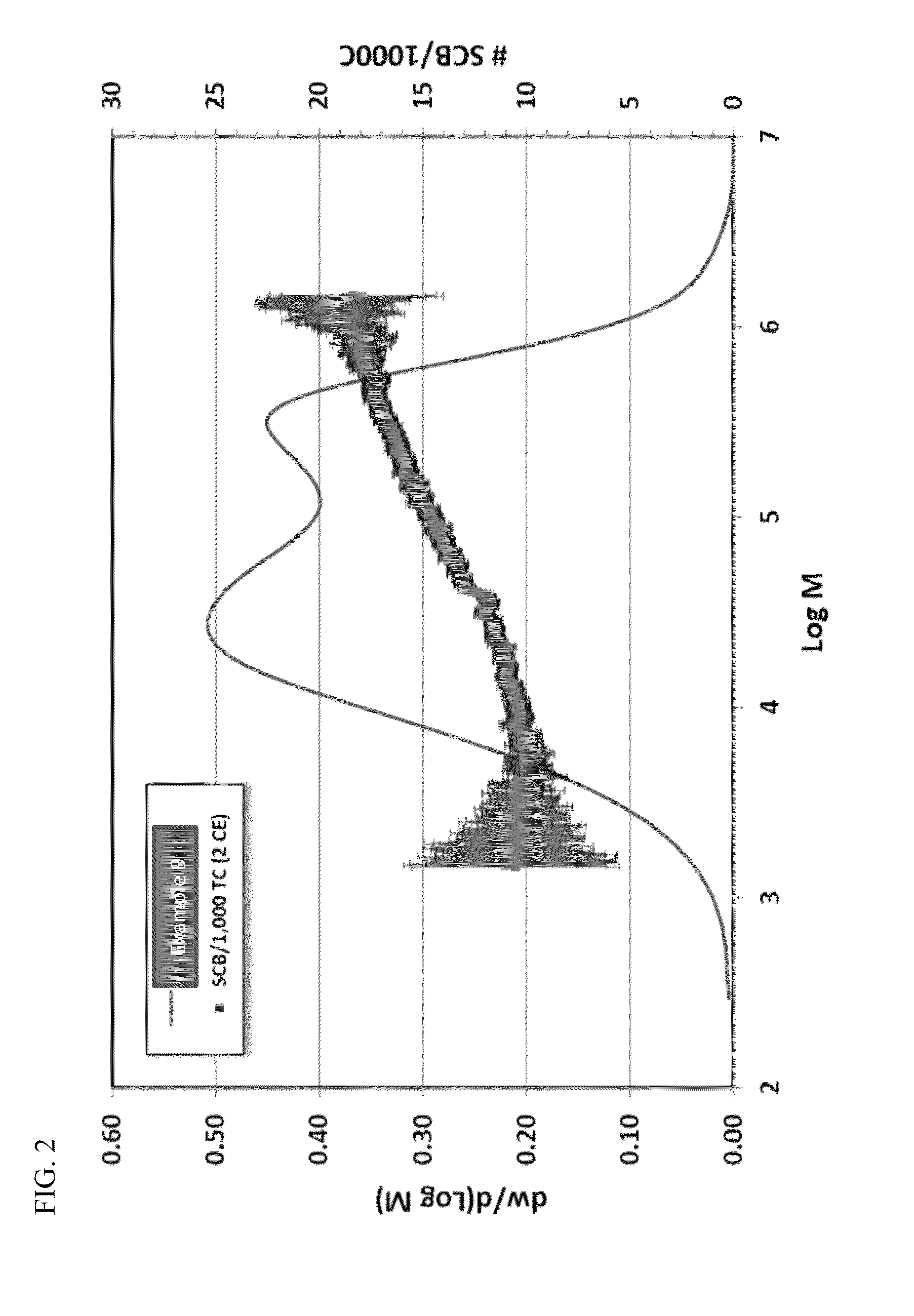Low density polyolefin resins and films made therefrom
a technology of low density and polyolefin resin, which is applied in the field of low density polyolefin resin and film made therefrom, can solve the problems of unbalanced tear resistance and increased density, and achieve the effect of reducing the number of defects and improving the quality of the finished produ
- Summary
- Abstract
- Description
- Claims
- Application Information
AI Technical Summary
Benefits of technology
Problems solved by technology
Method used
Image
Examples
examples
[0255]The invention is further illustrated by the following examples, which are not to be construed in any way as imposing limitations to the scope of this invention. Various other aspects, embodiments, modifications, and equivalents thereof which, after reading the description herein, may suggest themselves to one of ordinary skill in the art without departing from the spirit of the present invention or the scope of the appended claims.
[0256]Melt index (MI, g / 10 min) was determined in accordance with ASTM D1238 at 190° C. with a 2,160 gram weight. High load melt index (HLMI, g / 10 min) was determined in accordance with ASTM D1238 at 190° C. with a 21,600 gram weight.
[0257]Polymer density was determined in grams per cubic centimeter (g / cm3) on a compression molded sample, cooled at about 15° C. per hour, and conditioned for about 40 hours at room temperature in accordance with ASTM D1505 and ASTM D4703.
[0258]Molecular weights and molecular weight distributions were obtained using a P...
examples 1-7
[0280]In Example 1, bimodal polymer was produced in the reactor described above using a solution containing two metallocenes in the following amounts: the first (producing higher molecular weight) component was metallocene A at 45%, and the second (producing lower molecular weight) component was metallocene B at 55%. The total metallocene concentration in the reactor was 1.2 ppm, and the activator-support (sulfate treated alumina, described above) was fed to the reactor at the rate of approximately 0.25 lb per hour, to achieve a yield of about 2000 lb polymer per lb of alumina Triisobutylaluminum was fed to the reactor to maintain a concentration of 50 ppm in the isobutane. 1-Hexene was added to the reactor to maintain a concentration of about 0.6 wt. % of the isobutane diluent. Ethylene was added to maintain a concentration of 15 mol %. About 4.5 mlb of hydrogen were added to adjust the average HLMI to 10.3 g / 10 min. Reactor temperature was set at 99° C., and reactor polymer concen...
examples 8-16
[0301]Example 8 was a broad monomodal LLDPE film resin, having a nominal 0.2 melt index and a density of 0.924 g / cm3, commercially available from Chevron-Phillips Chemical Company LP. Each of Examples 9-16 utilized a dual catalyst system containing a two carbon bridged, zirconium based metallocene compound containing two indenyl groups (Metallocene E) and a single atom bridged, zirconium based metallocene compound containing a cyclopentadienyl and a fluorenyl group (Metallocene F).
[0302]In Example 9, bimodal polymer was produced in the reactor described above using a solution containing Metallocenes E and F at an E:F weight ratio of 8:1. The total metallocene concentration in the reactor was 0.8 ppm by weight, and the activator-support (fluorided silica-coated alumina, described above) was fed to the reactor at the rate of approximately 0.25 lb per hour, to achieve a yield of about 2000 lb polymer per lb of the fluorided silica-coated alumina Triisobutylaluminum was fed to the react...
PUM
| Property | Measurement | Unit |
|---|---|---|
| density | aaaaa | aaaaa |
| density | aaaaa | aaaaa |
| density | aaaaa | aaaaa |
Abstract
Description
Claims
Application Information
 Login to View More
Login to View More - R&D
- Intellectual Property
- Life Sciences
- Materials
- Tech Scout
- Unparalleled Data Quality
- Higher Quality Content
- 60% Fewer Hallucinations
Browse by: Latest US Patents, China's latest patents, Technical Efficacy Thesaurus, Application Domain, Technology Topic, Popular Technical Reports.
© 2025 PatSnap. All rights reserved.Legal|Privacy policy|Modern Slavery Act Transparency Statement|Sitemap|About US| Contact US: help@patsnap.com



